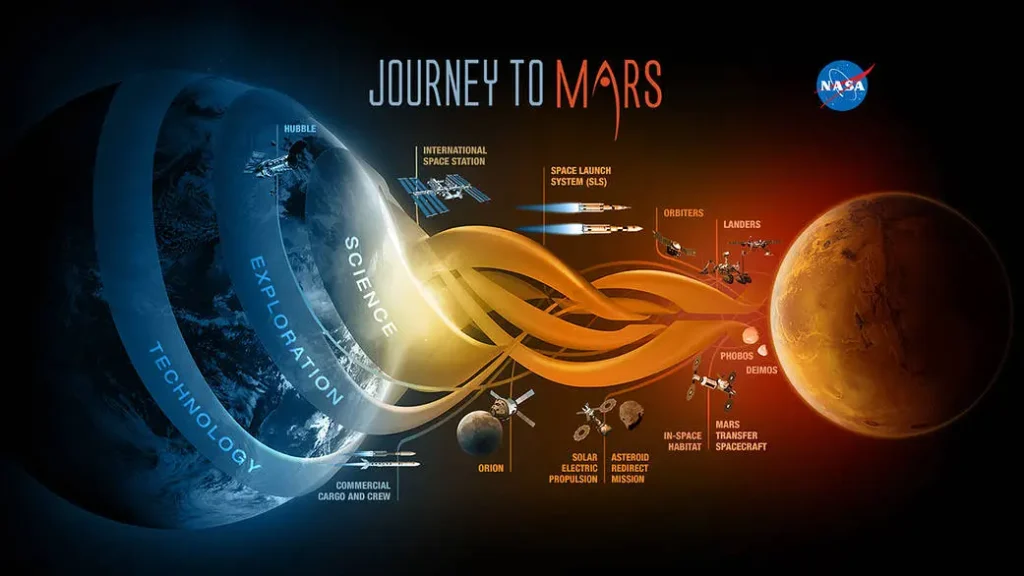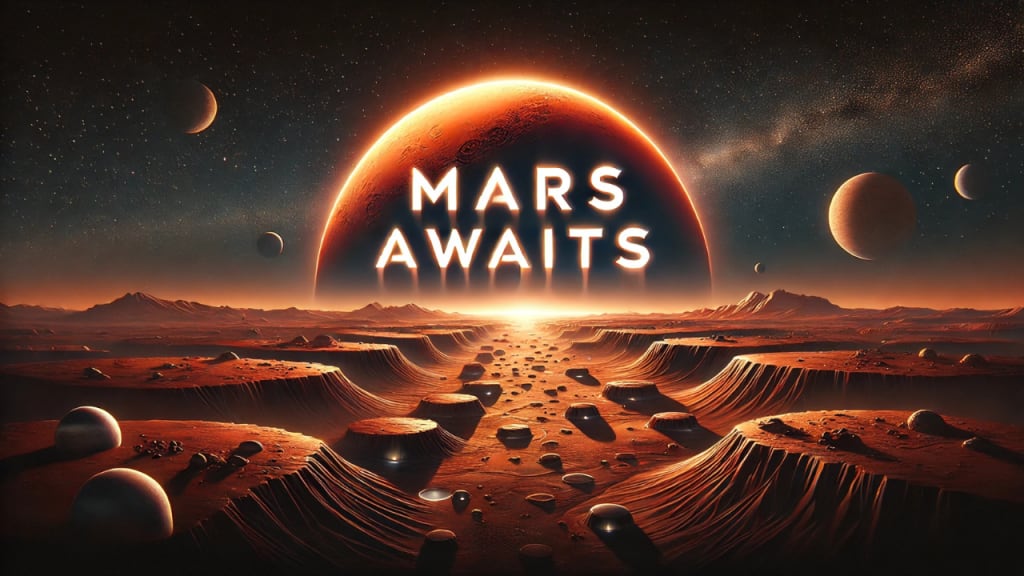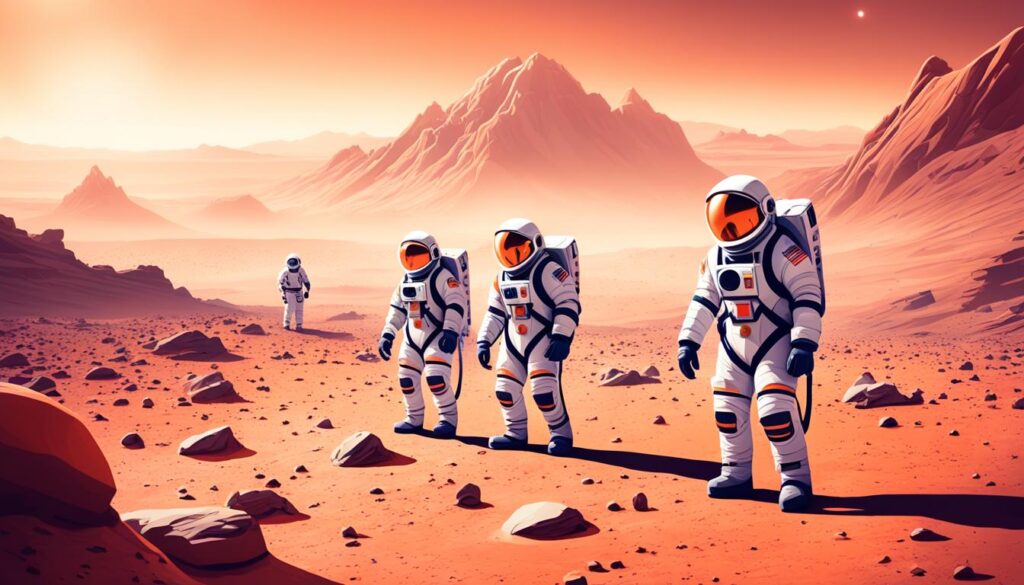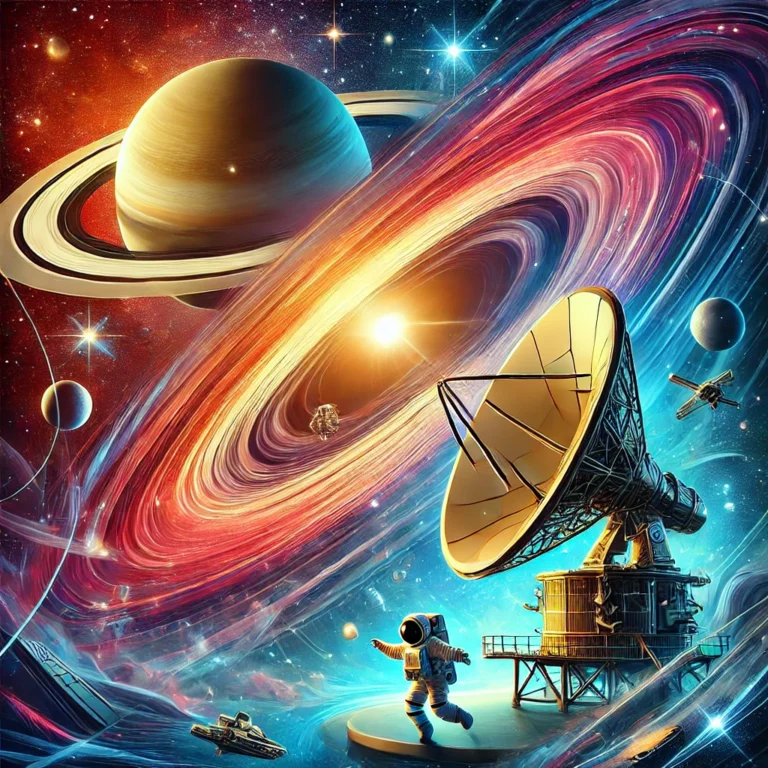INTRODUCTION:

Have you ever looked up at the night sky and wondered what it would be like to set foot on Mars? Well, you’re not alone! For decades, scientists and engineers have been working tirelessly to make human exploration of Mars a reality. In this post, we’ll take a closer look at the progress that’s been made and the challenges that still lie ahead.
Why Mars?
So, why all the fuss about Mars? What makes this red planet so captivating to us humans? Well, it’s a bit of a Goldilocks situation – it’s not too close, not too far, and it might even have the potential for life.
- Proximity: Compared to other planets, Mars is relatively close to Earth. This makes it a more feasible destination for human exploration with current technology.
- Relatively Stable Surface: Unlike some other planets, Mars has a relatively solid surface with mountains, valleys, and even evidence of ancient riverbeds. This offers a more stable environment for potential human outposts compared to, say, a gas giant like Jupiter.
- The Search for Life: One of the most compelling reasons to explore Mars is the possibility of finding past or even present life. Evidence suggests that Mars may have once harbored liquid water, a crucial ingredient for life as we know it. Discovering life beyond Earth would revolutionize our understanding of the universe and our place within it.
Want To Know More About:
- The Top 10 Most Amazing Discoveries in Space Exploration.
- Top 10 Most Dangerous Space Missions
- 10 Most Disturbing Facts About Space That Will Leave You Speechless
Trending Products For Space Enthusiasts
If you’re interested in learning more about space exploration and the mission to Mars, check out these two trending products:
- Mars-Themed Educational Kits: These kits provide hands-on learning experiences about Mars and space science, perfect for students or anyone interested in astronomy.
- Astronomy Books: Recommend popular titles like “The Martian” by Andy Weir or “Mars Direct” by Robert Zubrin for readers interested in learning more about Mars exploration.
Current Missions and Progress in Mars Exploration.

As of January 18, 2025, several space agencies and private companies are making significant strides in their missions to Mars. These efforts aim to explore the Red Planet, search for signs of life, and pave the way for future human exploration. Here’s a look at some of the most exciting current missions:
1. NASA’s Artemis Program
The Artemis Program is NASA’s ambitious initiative aimed at returning humans to the Moon by 2024 and establishing a sustainable presence there. But the ultimate goal is even more exciting: using the Moon as a stepping stone for a manned mission to Mars.
- Why the Moon?: The Moon serves as a testing ground for technologies and life-support systems that will be essential for longer missions to Mars. By learning how to live and work on the Moon, astronauts will gain invaluable experience that will help them prepare for the challenges of a Martian environment.
2. SpaceX’s Starship Program
SpaceX is at the forefront of space exploration with its development of the Starship, a fully reusable spacecraft designed to transport both people and cargo to destinations like the Moon and Mars.
- What Makes Starship Unique?: Starship is designed to carry up to 100 passengers and is equipped with advanced technology that allows it to land on various celestial bodies. Its reusability significantly lowers the cost of space travel, making it more accessible.
- Upcoming Missions: SpaceX plans to conduct uncrewed test flights followed by crewed missions, with aspirations to land humans on Mars in the coming years.
3. European Space Agency’s (ESA) ExoMars Program
The ExoMars Program, a collaboration between ESA and Russia’s Roscosmos, aims to search for signs of life on Mars, focusing particularly on its subsurface.
- Key Components: The program includes the Rosalind Franklin rover, which is scheduled to launch in 2028. This rover will drill into the Martian surface to collect samples and analyze them for organic compounds that could indicate past or present life.
- Trace Gas Orbiter: Launched in 2016, this orbiter is already studying Mars’ atmosphere and mapping trace gases that may provide clues about biological activity.
4. Ongoing Missions
In addition to these major programs, several active missions are currently exploring Mars:
- Perseverance Rover: NASA’s latest rover is searching for signs of ancient microbial life and collecting samples for future return to Earth.
- Tianwen-1: China’s first Mars mission includes an orbiter and rover (Zhurong), which are investigating Martian geology and searching for water beneath the surface.
- Hope Mars Mission: Launched by the United Arab Emirates, this mission focuses on understanding Mars’ climate and atmosphere.
- Mars Reconnaissance Orbiter (MRO): In operation since 2006, MRO continues to provide high-resolution images of the Martian surface, helping scientists study its geology and climate.
Upcoming Missions
Several exciting missions are planned for the near future:
- ESCAPADE Mission: Scheduled for launch in Spring 2025, this NASA mission will send two small satellites—Blue and Gold—to study Mars’ magnetosphere using cost-effective technology. The mission aims to gather data on how solar wind interacts with Mars’ atmosphere.
- Mars Sample Return Mission: An international effort aiming to bring samples from Mars back to Earth is also in development. This mission will provide critical insights into Martian geology and potential signs of past life.
The current landscape of Mars exploration is vibrant and full of promise. With multiple agencies working on innovative missions, we are closer than ever to answering fundamental questions about our neighboring planet. As we continue these efforts, we not only expand our scientific knowledge but also inspire future generations to explore beyond our world.
Challenges Ahead: Overcoming Obstacles to Mars Exploration.

As humanity sets its sights on Mars, several significant challenges must be addressed before we can successfully send humans to the Red Planet. While advancements in technology and planning are underway, the journey to Mars presents unique obstacles that could impact mission success and astronaut safety. Let’s explore some of the key challenges we face in this ambitious endeavor.
1. Radiation Exposure
The Challenge: Space radiation is one of the most pressing concerns for deep space missions, particularly for those traveling to Mars. Unlike Earth, which has a protective magnetic field and atmosphere that shield us from harmful cosmic rays and solar radiation, Mars lacks such defenses.
Why It Matters: Prolonged exposure to space radiation can lead to serious health issues for astronauts, including an increased risk of cancer, damage to the central nervous system, and other long-term effects.
Potential Solutions:
- Radiation Shields: Developing effective shielding materials that can protect astronauts during their journey and while on the Martian surface is crucial. Some proposals include using Martian regolith (soil) to create protective barriers around habitats.
- Habitat Design: Designing habitats that can provide adequate protection from radiation during solar storms or other cosmic events is essential for long-term missions.
2. Distance and Communication
The Challenge: Mars is approximately 140 million miles away from Earth, which presents significant communication challenges. The time it takes for signals to travel between the two planets can range from about 4 to 24 minutes, depending on their positions in their respective orbits.
Why It Matters: This delay complicates real-time communication, making it difficult for astronauts to receive immediate assistance or guidance from mission control. In emergencies, this lag could be critical.
Potential Solutions:
- Autonomous Systems: Developing autonomous systems that allow astronauts to make decisions without waiting for instructions from Earth could enhance mission safety.
- Pre-Programmed Protocols: Establishing clear protocols for various scenarios can help astronauts respond effectively without real-time communication.
3. Landing and Ascent
The Challenge: The Martian atmosphere is incredibly thin—about 1% of Earth’s atmosphere—making it difficult for spacecraft to slow down during landing. This thin atmosphere provides insufficient drag to help decelerate a spacecraft effectively.
Why It Matters: Landing safely on Mars requires precise calculations and advanced technology. If a spacecraft descends too quickly or inaccurately, it risks crashing upon landing.
Potential Solutions:
- Advanced Landing Technologies: Developing new landing technologies, such as retro-propulsion systems or parachute designs optimized for thin atmospheres, could improve landing success rates.
- Ascent Vehicles: Creating reliable ascent vehicles that can launch from the Martian surface back to orbit is essential for return missions. These vehicles must be designed to operate efficiently in low atmospheric pressure conditions.
While significant progress has been made in preparing for human exploration of Mars, numerous challenges remain. Addressing issues like radiation exposure, communication delays, and the complexities of landing and ascent will require innovative solutions and robust planning. As we continue to advance our understanding of these obstacles, we move closer to realizing the dream of sending humans to Mars.
Conclusion:
Getting humans to Mars is no small feat. It’s a monumental challenge that will require years of dedicated research, innovative engineering, and international cooperation. But the human spirit of exploration burns bright. With each new discovery, each technological breakthrough, we inch closer to that historic moment – the first human footsteps on Martian soil. It’s a journey filled with uncertainty, but also with incredible promise. The future of human space exploration hinges on our ability to overcome these challenges and reach for the stars. The red planet beckons, and the adventure is just beginning.
Disclosure/Disclaimer:
This article contains affiliate links, supporting our educational and informative contents creation.
We appreciate supporting us to create more value and fascinating contents here on our site for educational purposes only.





